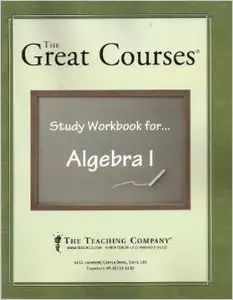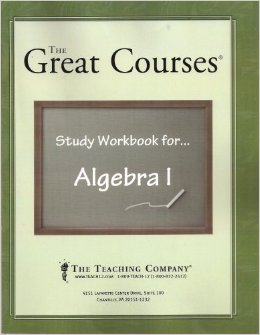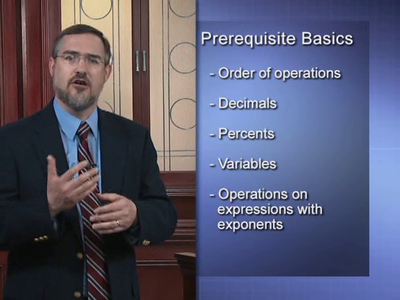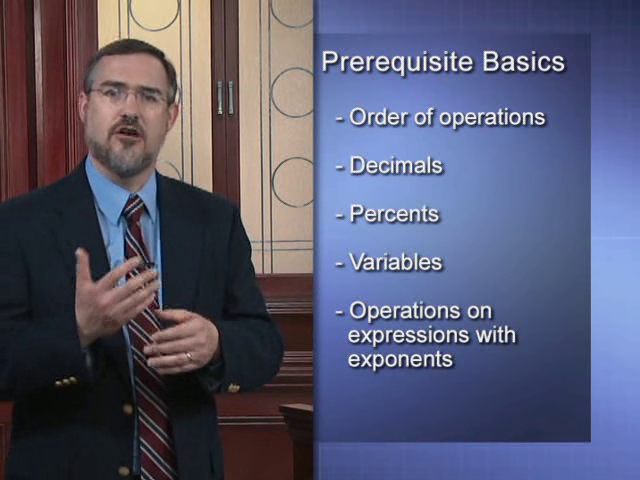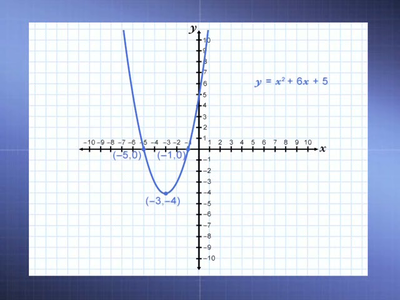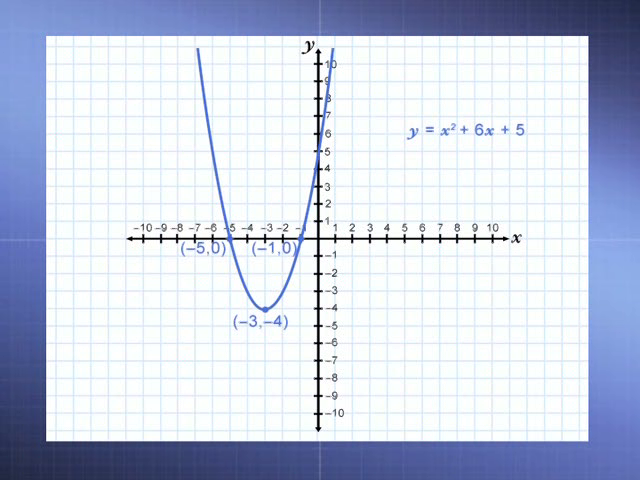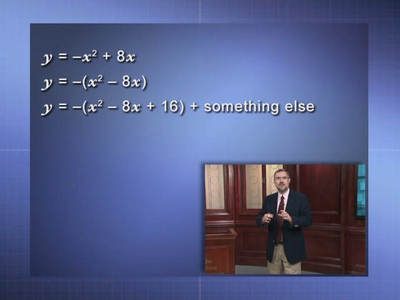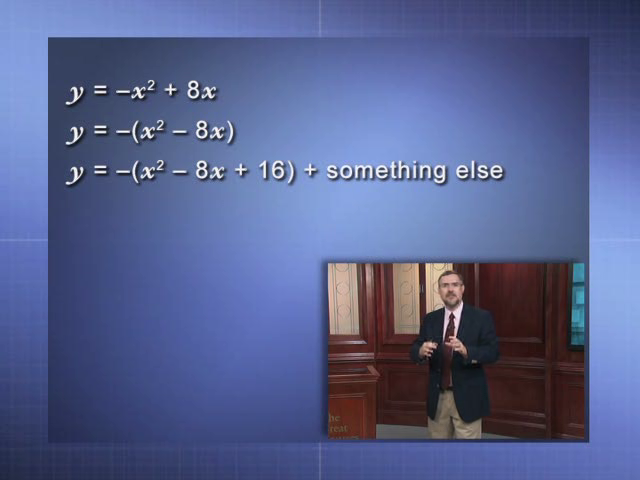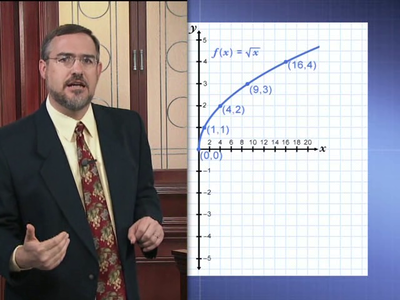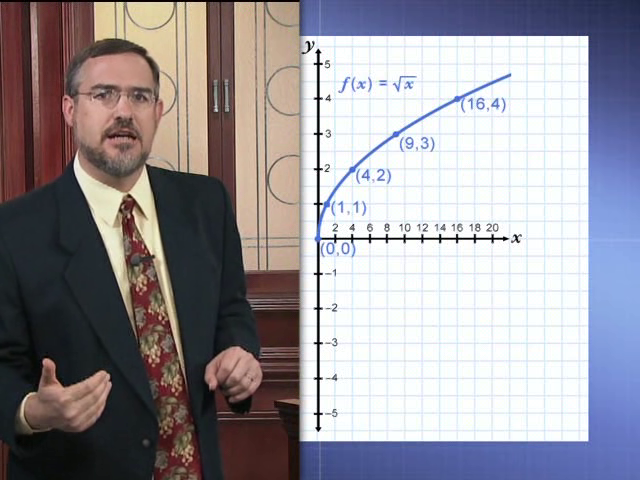The Great Courses: Algebra I - Course No. 1001
James A. Sellers Ph.D. - The Pennsylvania State University
James A. Sellers Ph.D. - The Pennsylvania State University
36xDVDRip | English | AVI | 640 x 480 | XviD ~735 kbps | 29.970 fps
MP3 | 128 kbps | 48.0 KHz | 2 channels | 36 lectures of 30 minutes | 6.75 GB
MP3 | 128 kbps | 48.0 KHz | 2 channels | 36 lectures of 30 minutes | 6.75 GB
Genre: eLearning / Education lectures: Math
Algebra I is one of the most critical courses that students take in high school. Not only does it introduce them to a powerful reasoning tool with applications in many different careers, but algebra is the gateway to higher education. Students who do well in algebra are better prepared for college entrance exams and for college in general, since algebra teaches them how to solve problems and think abstractly—skills that pay off no matter what major they pursue.Because algebra involves a new way of thinking, many students find it especially challenging. Many parents also find it to be the area where they have the most trouble helping their high-school-age children. With 36 half-hour lessons, Algebra I is an entirely new course developed to meet both these concerns, teaching students and parents the concepts and procedures of first-year algebra in an easily accessible way. Indeed, anyone wanting to learn algebra from the beginning or needing a thorough review will find this course an ideal tutor.
Conquer the Challenges of Learning Algebra
Taught by Professor James A. Sellers, an award-winning educator at The Pennsylvania State University, Algebra I incorporates the following valuable features:
Drawing on extensive research, The Great Courses and Dr. Sellers have identified the biggest challenges for high school students in mastering Algebra I, which are specifically addressed in this course.
This course reflects the latest standards and emphases in high school and college algebra taught in the United States.
Algebra I includes a mini-textbook with detailed summaries of each lesson, a multitude of additional problems to supplement those presented in the on-screen lessons, guided instructions for solving the problems, and important formulas and definitions of terms.
Professor Sellers interacts with viewers in a one-on-one manner, carefully explaining every step in the solution to a problem and giving frequent tips, problem-solving strategies, and insights into areas where students have the most trouble.
As Director of Undergraduate Mathematics at Penn State, Professor Sellers appreciates the key role that algebra plays in preparing students for higher education. He understands what entering college students need to have mastered in terms of math preparation to launch themselves successfully on their undergraduate careers, whether they intend to take more math in college or not. Professor Sellers is alert to the math deficiencies of the typical entering high school graduate, and he has developed an effective strategy for putting students confidently on the road to college-level mathematics.
Whatever your age, it is well worth the trouble to master this subject. Algebra is indispensible for those embarking on careers in science, engineering, information technology, and higher mathematics, but it is also a fundamental reasoning tool that shows up in economics, architecture, publishing, graphic arts, public policy, manufacturing, insurance, and many other fields, as well as in a host of at-home activities such as planning a budget, altering a recipe, calculating car mileage, painting a room, planting a garden, building a patio, or comparison shopping.
And for all of its reputation as a grueling rite of passage, algebra is actually an enjoyable and fascinating subject—when taught well.
Algebra without Fear
Professor Sellers takes the fear out of learning algebra by approaching it in a friendly and reassuring spirit. Most students won't have a teacher as unhurried and as attentive to detail as Dr. Sellers, who explains everything clearly and, whenever possible, in more than one way so that the most important concepts sink in.
He starts with a review of fractions, decimals, percents, positive and negative numbers, and numbers raised to various powers, showing how to perform different operations on these values. Then he introduces variables as the building blocks of algebraic expressions, before moving on to the main ideas, terms, techniques, pitfalls, formulas, and strategies for success in tackling Algebra I. Throughout, he presents a carefully crafted series of gradually more challenging problems, building the student's confidence and mastery.
After taking this course, students will be familiar with the terminology and symbolic nature of first-year algebra and will understand how to represent various types of functions (linear, quadratic, rational, and radical) using algebraic rules, tables of data, and graphs. In the process, they will also become acquainted with the types of problems that can be solved using such functions, with a particular eye toward solving various types of equations and inequalities.
Throughout the course, Professor Sellers emphasizes the following skills:
Using multiple techniques to solve problems
Understanding when a given technique can be used
Knowing how to translate word problems into mathematical expressions
Recognizing numerical patterns
Tips for Success
Algebra is a rich and complex subject, in which seemingly insurmountable obstacles can be overcome, often with ease, if one knows how to approach them. Professor Sellers is an experienced guide in this terrain and a treasure trove of practical advice—from the simple (make sure that you master the basics of addition, subtraction, multiplication, and division) to the more demanding (memorize the algebraic formulas that you use most often). Here are some other examples of his tips for success:
Learn the order of operations: These are the rules you follow when performing mathematical operations. You can remember the order with this sentence: Please Excuse My Dear Aunt Sally. The first letter of each word stands for an operation. First, do all work in parentheses; then the exponents; then multiplication and division; finally, do the addition and subtraction.
Know your variables: It's easy to make a mistake when writing an algebraic expression if you don't understand what each variable represents. Choose letters that you can remember; for example, d for distance and t for time. If you have sloppy handwriting, avoid letters that look like numbers (b, l, o, s, and z).
Use graph paper: You'll be surprised at how the grid of lines encourages you to organize your thinking. The columns and rows help you keep your work neat and easy to follow.
Pay attention to signs: Be very careful of positive and negative signs. A misplaced plus or minus sign will give you the wrong answer.
Don't mix units: If you are using seconds and are given a time in minutes, make sure to convert the units so they are all the same.
Simplify: Straighten out the clutter in an equation by putting like terms together. Constants, such as 7, -2, 28, group together, as do terms with the same variable, such as 3x, x, -10x. Then combine the like terms. Often you'll find that the equation practically solves itself.
Balance the equation: When you perform an operation on one side of an equation—such as adding or subtracting a number, or multiplying or dividing the entire side by a quantity—do the exact same thing to the other side. This keeps things in balance.
Above all, check your work! When you have finished a problem, ask yourself, "Does this answer make sense?" Plug your solution into the original equation to see if it does. Checking your work is the number one insurance policy for accurate work—the step that separates good students from superstar students.
By developing habits such as these, you will discover that solving algebra problems becomes a pleasure and not a chore—just as in a sport in which you have mastered the rudiments and are ready to face a competitor. Algebra I gives you the inspirational instruction, repetition, and practice to excel at what for many students is the most dreaded course in high school. Open yourself to the world of opportunity that algebra offers by making the best possible start on this all-important subject.
More Info: homepage
Course Lecture Titles:
00. Professor Bio
01. An Introduction to the Course
02. Order of Operations
03. Percents, Decimals, and Fractions
04. Variables and Algebraic Expressions
05. Operations and Expressions
06. Principles of Graphing in 2 Dimensions
07. Solving Linear Equations, Part 1
08. Solving Linear Equations, Part 2
09. Slope of a Line
10. Graphing Linear Equations, Part 1
11. Graphing Linear Equations, Part 2
12. Parallel and Perpendicular Lines
13. Solving Word Problems with Linear Equations
14. Linear Equations for Real-World Data
15. Systems of Linear Equations, Part 1
16. Systems of Linear Equations, Part 2
17. Linear Inequalities
18. An Introduction to Quadratic Polynomials
19. Factoring Trinomials
20. Quadratic Equations—Factoring
21. Quadratic Equations—The Quadratic Formula
22. Quadratic Equations—Completing the Square
23. Representations of Quadratic Functions
24. Quadratic Equations in the Real World
25. The Pythagorean Theorem
26. Polynomials of Higher Degree
27. Operations and Polynomials
28. Rational Expressions, Part 1
29. Rational Expressions, Part 2
30. Graphing Rational Functions, Part 1
31. Graphing Rational Functions, Part 2
32. Radical Expressions
33. Solving Radical Equations
34. Graphing Radical Functions
35. Sequences and Pattern Recognition, Part 1
36. Sequences and Pattern Recognition, Part 2
37. Credits
General
Complete name : 25. The Pythagorean Theorem.avi
Format : AVI
Format/Info : Audio Video Interleave
File size : 192 MiB
Duration : 30mn 47s
Overall bit rate : 872 Kbps
Writing application : VirtualDubMod 1.5.4.1 (build 2178/release)
Writing library : VirtualDubMod build 2178/release
Video
ID : 0
Format : MPEG-4 Visual
Format profile : Advanced Simple@L5
Format settings, BVOP : 1
Format settings, QPel : No
Format settings, GMC : No warppoints
Format settings, Matrix : Custom
Codec ID : XVID
Codec ID/Hint : XviD
Duration : 30mn 47s
Bit rate : 735 Kbps
Width : 640 pixels
Height : 480 pixels
Display aspect ratio : 4:3
Frame rate : 29.970 fps
Color space : YUV
Chroma subsampling : 4:2:0
Bit depth : 8 bits
Scan type : Progressive
Compression mode : Lossy
Bits/(Pixel*Frame) : 0.080
Stream size : 162 MiB (84%)
Writing library : XviD 1.2.0.dev47 (UTC 2006-11-01)
Audio
ID : 1
Format : MPEG Audio
Format version : Version 1
Format profile : Layer 3
Mode : Joint stereo
Mode extension : MS Stereo
Codec ID : 55
Codec ID/Hint : MP3
Duration : 30mn 47s
Bit rate mode : Constant
Bit rate : 128 Kbps
Channel(s) : 2 channels
Sampling rate : 48.0 KHz
Compression mode : Lossy
Stream size : 28.2 MiB (15%)
Alignment : Aligned on interleaves
Interleave, duration : 67 ms (2.00 video frames)
Interleave, preload duration : 504 ms
Writing library : LAME3.97
Encoding settings : -m j -V 4 -q 2 -lowpass 17 -b 128
Complete name : 25. The Pythagorean Theorem.avi
Format : AVI
Format/Info : Audio Video Interleave
File size : 192 MiB
Duration : 30mn 47s
Overall bit rate : 872 Kbps
Writing application : VirtualDubMod 1.5.4.1 (build 2178/release)
Writing library : VirtualDubMod build 2178/release
Video
ID : 0
Format : MPEG-4 Visual
Format profile : Advanced Simple@L5
Format settings, BVOP : 1
Format settings, QPel : No
Format settings, GMC : No warppoints
Format settings, Matrix : Custom
Codec ID : XVID
Codec ID/Hint : XviD
Duration : 30mn 47s
Bit rate : 735 Kbps
Width : 640 pixels
Height : 480 pixels
Display aspect ratio : 4:3
Frame rate : 29.970 fps
Color space : YUV
Chroma subsampling : 4:2:0
Bit depth : 8 bits
Scan type : Progressive
Compression mode : Lossy
Bits/(Pixel*Frame) : 0.080
Stream size : 162 MiB (84%)
Writing library : XviD 1.2.0.dev47 (UTC 2006-11-01)
Audio
ID : 1
Format : MPEG Audio
Format version : Version 1
Format profile : Layer 3
Mode : Joint stereo
Mode extension : MS Stereo
Codec ID : 55
Codec ID/Hint : MP3
Duration : 30mn 47s
Bit rate mode : Constant
Bit rate : 128 Kbps
Channel(s) : 2 channels
Sampling rate : 48.0 KHz
Compression mode : Lossy
Stream size : 28.2 MiB (15%)
Alignment : Aligned on interleaves
Interleave, duration : 67 ms (2.00 video frames)
Interleave, preload duration : 504 ms
Writing library : LAME3.97
Encoding settings : -m j -V 4 -q 2 -lowpass 17 -b 128
ScreenShots
For more, Visit my AH-blog


